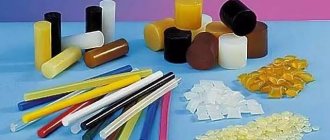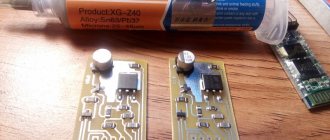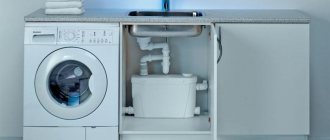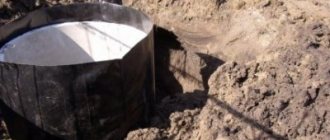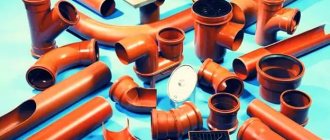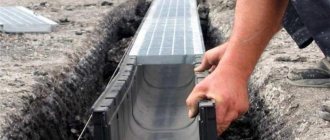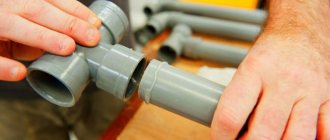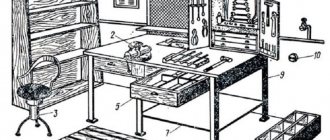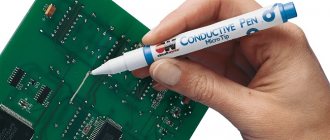The appearance of hot-melt adhesive materials and devices for their use was so unusual and unexpected that the question involuntarily arose: what is a glue gun for if the market is overflowing with various types and brands of glue capable of gluing almost any material with a hard surface. But, as it turned out, consumer qualities and comfort when gluing deserve to devote some free time to the glue gun.
About glue sticks or sticks - what they are and how to use them without guns
A glue stick is a cylindrical oblong stick, which today is sold not only in specialized stores.
These sticks consist of an adhesive composition, but in order to prevent them from sticking together prematurely, they contain a hardener. This hardener loses its properties when exposed to high temperatures, which is very convenient to use. The rods have different lengths, thicknesses and even colors, which is done specifically so that everyone can choose the necessary material depending on the technological task. First, let's figure out what colors glue sticks are and what materials they are used for:
- Transparent - the most popular, allowing you to glue glass, metal, tiles, paper, etc. Their main advantage is that after use, they leave virtually no traces. Transparent sticks are popular for needlework
- White - used for connecting plastic, cables, tiles, tiles and other white products
- Black - used for bonding leather and carpeting
- Yellow - allows you to glue wood, cardboard, paper, and other similar materials
In addition to standard colors, there are also sticks consisting of several colors or with glitter. They are usually used for drawing various figures when making crafts. If the tool is used only for gluing around the house, then ordinary transparent rods will do, but for needlework you will have to stock up on sticks of different colors.
The length of the glue sticks affects how long the tool will last. If you do handicrafts or glue linoleum, then it is recommended to choose long rods. In cases where you need to glue or grease, it is better to buy short rods. Manufacturers produce them in lengths from 40 mm to 200 mm. The shorter the rod, the more often you have to install new ones, which is inconvenient, for example, when making crafts.
When purchasing, the seller will ask a question about what diameter of the rods are needed? All household appliances have a mounting hole of 7 mm, and professional ones have 7 mm and 11 mm. There are others, for example 9 mm, 12 mm, but they are rare. Typically, the diameter of the rods that can be installed in a specific device model is indicated in the instructions. It is impossible to install a rod with a diameter of 7 mm into an 11 mm hole, since the pusher will not be able to push it forward.
This is interesting!
Manufacturers produce tools with different hole sizes for installing glue sticks.
Thermal guns of 7 mm and 11 mm are popular, which must be taken into account when purchasing consumables. https://youtube.com/watch?v=GkhqJFtFjsU%3F
Some brands and prices
Since after heating the glue begins to flow out of the nozzle, you need to place a container in advance, protecting the surface of the work table. If there is no power button on the case, then the instrument will need to be periodically unplugged (pull out the power cord). Since the body itself can also be heated, its integrity deteriorates over time, starting at the junction with the hot spout. To avoid getting burned, it is better to choose a gun whose body has protective and anti-slip linings, dense plastic with low thermal conductivity. Standard Chinese models are usually designed for rods with a diameter of 7 mm.
Among well-known manufacturers, you can pay attention to Dremel brand products. They operate at high temperatures, have an anti-drip system and a smart switch.
- The Dremel 910 JC is a professional high temperature heat gun without an on/off switch. It works for a very long time (several hours without breaks) without heating the case and losing the hot glue released.
- The Dremel 930 JC is equipped with two heating modes and is switched by a button on the handle. Suitable for active needlewomen. The only negative concerns the low weight of the tool, which is why it can fly off the surface.
- The Dremel 940 is used for home repairs with wood, plastic or ceramics. The device has increased productivity and large dimensions. The rod is heated to 195 °C. The semi-automatic system allows you to pull out the cord and glue parts in hard-to-reach places.
The cost depends on the quality of the case, parts, and protective options. The price for standard models is several hundred rubles. A professional pistol for permanent work can cost more than twenty thousand rubles.
Problems and their solutions
The most common problem when working with a heat gun is that the glue flows uncontrollably, without pressing the trigger. There may be several reasons:
- The temperature is too high for a particular rod. It is optimal when the heat gun has a heating regulator to set the required melting degrees. Otherwise you will have to replace the rods. In a good gun, the nozzle has a ball valve - the so-called drip protection;
- The rod is inserted too tightly. Sometimes it helps to move it back a little;
- rod diameter mismatch. Some models require decimal sizes. For example, Sigma - 11.2 mm. If you put an 11 mm rod into such a device, a pressure difference occurs inside the heater, and the glue flows back. Using rods of the correct diameter solves the issue;
- low quality pistol. You can insert a toothpick into the nozzle during a pause in work. Or accept it and try to finish the work as quickly as possible: the contents flow out very quickly.
If the glue stops coming out, the gun may be clogged. It is disassembled and cleaned. To avoid this, do not allow glue to stick around the nozzle.
You can get excellent results and joy from work only with a working hot glue gun
For battery-powered models, the glue sometimes becomes viscous and has difficulty passing through the nozzle. You need to reheat the device in the charging station.
In cheap models, when there is a break in use for several minutes, the pusher gets stuck in the soft rod and cannot move it. You need to turn off the gun and let it cool.
If the glue stretches like a thread and you can’t apply a dot, craftswomen advise keeping the rods in the refrigerator. Most likely they are of low quality.
How to change the color of the rod correctly
To prime the gun, the rod is simply inserted into a special hole at the back. After finishing work, you don’t have to remove it. Then the next time you turn on the device will be immediately ready for use.
Sometimes it is necessary to change the color of the coming out glue, for example, blue to transparent
If the gun has cooled down, turn it on for about 1 minute, then carefully unscrew the rod. Charge the new one, press the trigger to squeeze out the remnants of the old one until the desired color appears
The new rod, after insertion, by smoothly pressing the trigger, completely pushes out the remnants of the old one
Security measures
You need to work with a glue gun on a flat, hard surface, previously covered with film or at least newspaper. If the mass is applied to metal or wood, then it can still be removed, but paper or cardboard is not so easy to clean.
Do not touch the nozzle of the gun if the device is turned on and in operating mode. The burn can be very severe. This also applies to the released glue, which, if it comes into contact with the skin, can cause a burn.
The switched on device must not be left unattended, even for a few minutes. A faulty socket needs to be replaced. Complete shutdown of the gun must be done at least once an hour with a break of 5-7 minutes.
A switched off, folded pistol should be stored out of the reach of children.
What is a glue gun used for?
What is a glue gun used for and what does it glue? It's easier to say what he doesn't like. Using this small and convenient device, joints are sealed and installation seams are filled. It allows you to speed up the installation of ventilation in the garage and ensures quick installation of sound insulation. It makes it easy to glue up loose wallpaper or a curved baseboard on the ceiling or in a hard-to-reach corner. A stick-on gun will quickly and easily attach ceiling moldings or wall appliques.
Many types of force majeure repairs are carried out using softened and carefully dosed glue, including gluing up a decorative plaster stone that accidentally flew off - do not dilute a bucket of mortar just for the sake of one bounced tile. Designers and radio amateurs resort to the adhesive tool; it is useful for modeling and design. There are craftsmen who are able to add design advantages to the adhesive mass itself, placing it in balls, elongated beads or colorful rain on walls, panels, postcards and souvenirs. So the capabilities of such pistols are not limited to repairs.
Photo of glue gun, e-ukrservice.com
Pictured is a glue gun, e-ukrservice.com
Photo of a cordless glue gun, e-ukrservice.com
Photo - what can be glued with a glue gun, e-ukrservice.com
Photo - how to choose a glue gun, e-ukrservice.com
How to use
Thermal guns are used at large furniture manufacturing enterprises, where they are used to install finishing elements on cabinets, upholstery of sofas, and armchairs. They are used in construction and the production of decorative items. When purchasing for home use, the list of operations increases. Hobbies, children's crafts, interior decoration, minor repairs are the area of application for a glue gun. You need to know the rules for using the device at home. Additional information will make the gun more effective where it can be used, and put it aside where it is inappropriate.
How to charge
Manufacturers have tried to make the operation of the device simple. The design of the pistol allows it to be loaded without additional devices, disassembly, or other operations. The simplest charge is the first one. The rod inlet and nozzle are clean. There are no traces of past work, signs of physical impact, or damage. For work, take the glue of the required brand. When purchasing, you need to know the characteristics of the rod. Products include the following types:
- Transparent. Universal rods with low melting point.
- Black. Designed for sealing joints, like sealant. They have a high melting point.
- Colored. The polymer is painted over the entire mass and the glue on the parts is not visible. Widely used in handicrafts.
- Decorative. They are used when the glue itself becomes a finishing element. May contain glitter, mother-of-pearl, and fibers.
- High temperature. Special types of glue for fixing elements that are subject to increased loads.
As a rule, charging the glue gun itself is not difficult. The rod is inserted into the hole in the back of the device until it stops. In some models, it is necessary to advance it by repeatedly pressing the trigger until it rests on the heating chamber. Guns with a temperature indicator are convenient. A glowing diode indicates that the device continues to heat up. When the indicator goes out, you can start working.
Warm-up rules
The melting point is indicated on the packaging with the rods. If you purchased a low-power gun, then not every type of glue will work. There are models designed to work with low-temperature rods that melt at 105 °C. It is not recommended to insert consumables with a higher melting point into them. Even if the glue begins to soften, the work will be very difficult and long. Excessive pressure on the mechanical parts of the gun may cause them to break.
Depending on the power of the device and the quality of the glue, the heating time can be 2–8 minutes. If after this period it is not possible to squeeze out the molten polymer, then the gun does not fit the brand of the rod, or it is broken. Overheating also has negative consequences. Liquid glue may randomly flow out of the nozzle and enter the directional coupling, which will then require cleaning. When working with different brands of rods, you need to get a device with a temperature regulator. Then it will be easier to glue, using all available possibilities.
Replacing the rod
Inexperienced craftsmen often have problems when a small piece of consumable material remains. The rod leaves the feed mechanism, but partially remains in the guide sleeve and heating chamber. You can just push it through next. But it is much more convenient to drop hot glue onto the end of the new rod and connect it to the shank of the one already in the gun.
If a cold gun already has a rod that needs to be changed, you must first warm it up. The hardened polymer mass cannot be removed from the device. You can break it. The gun is plugged in and the rod is carefully removed, in place of which a new consumable is already installed.
Hot glue gun: design and operating features
The shape of a glue gun is similar to a regular gun, which is why it got its name. The device is filled with a glue stick, which, when heated, melts to a fluid consistency. The rod must be installed from the back of the tool, tucking it into a special receiver. During operation, its tip enters the heating module, and in about 4-5 minutes the glue melts. When the trigger is pressed, the composition comes out of the nozzle onto the surface of the product.
The design of the glue gun includes the following elements:
- Heating module. Located in the barrel, it is a metal reservoir, at the bottom of which there is a heating unit. More expensive models have multiple heating units to melt the glue.
- Ring pusher. This is the glue supply mechanism that most often breaks, mainly due to excessive force by the user.
- Clutch. It looks like a tubular receiver located under the glue heating chamber. The coupling is needed to seal the system elements so that the molten composition does not get into them.
- Nozzle (nozzle, nozzle). Allows you to direct the flow of glue in the desired direction. There is a shut-off valve inside that prevents the solution from flowing out freely. The outside of the nozzle is coated with a heat-resistant alloy that protects it from damage. This part of the gun must be cleaned regularly to remove any glue residue.
Distinctive features of hot glue guns
When choosing, you need to pay attention to the quality of the hot glue gun body. The box itself must be made of durable polymers that can withstand heat without burning your hand
There are models with a viewing window where you can see the remaining glue. The handles often have anti-slip inserts, and the package includes a stand. An interesting design is the spray gun, which significantly speeds up the application of glue to large surfaces. When purchasing a gun, you must compare the diameter of its barrel with the size of the glue stick - they must match.
Required glue heating temperature
The glue begins to melt already at +80 degrees, but the process will be very slow. Therefore, guns make it possible to melt the material at +150…+200 degrees, which seriously increases productivity. In expensive professional models, the heating temperature of the glue reaches +500 degrees.
Glue feed speed
Typically glue guns can dispense 5-20g of glue per minute, although the rate depends on heating time and user need. The upper limit of the indicator, in fact, is the limit of the capabilities of both the device and the master, otherwise there is a high risk of making a mistake. However, special high-speed guns (30 g of glue per minute and above) are sold for professionals.
Power, performance, melt temperature and additional options
The main parameters that characterize the quality of a glue gun are power and speed. Here you need to decide on the scope and frequency of use of the equipment. If you are an amateur and you need a heat gun for one-time work around the house, it makes no sense to purchase expensive heat guns with a power of 300 W or higher. For one-time work, heat guns with a power of 20 to 100 W are quite suitable.
Models with automatic power control are easy to use. The device itself knows when and what power to use in each case. For example, during the melting stage it heats up to 200 W, during operation it drops to an average power of 40 W and during stopping - to 15 W. This saves energy and glue stick consumption.
However, power is not a decisive indicator when choosing; performance plays a much larger role. If you need a high melting rate and flow out of the mass, pay attention to this indicator. Typically it varies from 5 to 30 g of glue per minute. This indicator is especially important when performing large-scale repair work. For example, gluing plywood or PVC. It will not be possible to quickly apply glue over the entire area and press the material at low productivity. At this time, some of the glue will already begin to dry out and it will not be possible to achieve good adhesion to the surface. Therefore, speed (high performance) is important here. When working with small parts, purchasing a glue gun with high productivity is impractical.
Choose a tool that, even subjectively, works quickly
The range of work with materials depends on the melt temperature of the glue gun. For example, paper, cardboard and textiles do not tolerate too high temperatures. To work with them, low-temperature rods and special guns with a melting point of 105°C are used. The average melting temperature of a hot-melt gun is 165–170°C. We do not recommend purchasing a device with a melting point above 200°C. This leads to increased pressure inside the barrel and rapid wear of parts.
The power supply of an electric heat gun also plays an important role. If you are an amateur and purchase a heat gun for a small amount of work, a regular device with mains power from a cord will suit you. Professionals may want to look at more expensive battery-powered or semi-autonomous models. The battery allows the heat gun to operate autonomously from 45 minutes to 2 hours without being connected to the network. Semi-autonomous heat guns are detached from the cord and can work for 10–15 minutes without being connected to the network, maintaining the original heating temperature. An improved version of the cordless glue gun is a model with a docking station, which performs two functions simultaneously - it heats the rod autonomously and, together with an additional container, prevents drops from falling onto the surface during heating.
The German company Steinel has proven itself well in the market for high-quality glue guns. Among its varieties you can find all the listed power options for the device. The company produces both household and professional glue guns.
These were the main parameters. Additional options that can help you make your final choice include:
- temperature adjustment, allows you to set the optimal heating level for different materials;
- automatic temperature control, responsible for changing three modes of the glue gun (warm-up, operating temperature, standby mode);
- heating indicator, the readiness of the device for operation is indicated by an LED that lights up when it warms up to operating temperature;
- a viewing window, provided in expensive and more budget series, allows you to control the degree of insertion of the rod into the coupling and its length;
- backlight, a useful feature if you often have to work with a heat gun in the dark and in a room with poor visibility;
- storage case, set of spare rods, heat-resistant work mat.
How to use: charge, warm up, replace the rod
The small device is made using modern technology and is very easy to use. To avoid interruptions in work, the points for applying glue are planned in advance and all the necessary materials are prepared. The viscous mass cools quickly, especially in low-power models. The sooner you apply little things like beads, rhinestones or sequins, the stronger they hold on. The operating procedure is as follows:
- Connect the device to the network. If there is a power button, put it in operating mode.
- Insert the rod into the special rear hole until it stops. Leave to heat for the time specified in the instructions, ranging from 2-10 minutes. The plastic body of the heat gun also gets hot. By touching it, you can check the operating status of the device if there is no power indicator.
- Press the feed control button. A drop of hot substance will appear - the device is ready for use.
- Apply glue to one of the parts and immediately press the surfaces to be glued together. Can be applied spotwise or in a stream. The glue releases as long as the trigger is pulled.
- If any remaining glue appears, remove it with a sharp knife after cooling. The hardening area can withstand mechanical loads after 5 minutes.
During a break in work, the gun is placed on a stand. The nozzle should point downwards; it is advisable to place some kind of substrate under it. Silicone is better because the glue does not stick to it. Then no hot residue will get onto the work surface.
A special stand for the heat gun protects the working surface from hot drops and fixes the device
In the window of the gun you can see when the rod ends. To continue work, insert the next one, which will push through the remains of the old one.
Bonding points can be separated by heating.
Hot glue crafts
What can be made from hot glue? There are many ideas for crafts for beginners on the Internet (for example, on the YouTube channel Trum-Trum-Select), life hacks and interesting interior items are described. To work you will need:
- glue gun;
- foil;
- translucent paper;
- pencil;
- wax crayons;
- cardboard;
- acrylic paints;
- sparkles, etc.
You can use hot glue to decorate your phone case. The product is squeezed onto the product in the form of any pattern you like, allowed to dry, and then carefully painted with acrylic paint. You can also pour glue into a silicone mold and insert a metal ring on top. After hardening, you need to remove the mold - you will get an original keychain.
It's easy to fill your fangs with a gun for Halloween. To do this, you need to lubricate the foil with regular hand cream, then squeeze the teeth blanks directly onto the cream. After hardening, they can be removed, painted and glued to a cardboard mask. Using hot glue, you can draw on fabric, wool, paper and wallpaper, fulfilling all the most original ideas.
Why are the main types of glue dangerous?
There are several hundred types of adhesives. Each, depending on its composition, is designed to work with certain materials. The danger of glue directly depends on the components of its composition. Some of them are absolutely safe, while others can cause severe burns to the respiratory tract, destroy brain cells, and negatively affect the nervous system and liver.
Ministry of Health warns that glue is dangerous
The following glue components are most dangerous to humans:
- epoxy resins can damage the skin and cause dermatitis even without direct contact;
- anhydrides destroy the mucous membrane of the respiratory tract, cause suffocation, and are dangerous to the eyes;
- Toluene destroys the nervous system, brain cells and liver. Until 1998, toluene, which was responsible for the rapid development of substance abuse, was part of the Moment glue;
- any hardeners depress the nervous system, lower blood pressure, and impair breathing;
- phenol formaldehyde is the cause of ulcerative dermatitis.
One of the most dangerous glues is widely used in everyday life. Everyone bought it at least once. This glue is called cyanoacrylate or “Second”. Once on the skin, it instantly penetrates into its deep layers, which causes a burning sensation and the affected areas peel off. It poses a huge danger to the eyes and respiratory tract, and the glue vapors have a destructive effect.
All adhesive compositions are divided into four groups depending on the degree of danger.
Safe. PVA-based adhesives fall into this category. They are based on synthetic resins and water. PVA glue is available with a dispenser in the form of a pencil. This glue does not burn, does not irritate the skin and mucous membranes, and is non-toxic. After drying, the glue does not release toxic substances. In case of direct contact with the eyes, it is simply washed off with running water. PVA glue is used to produce glue sticks and wallpaper adhesives.
- Medium hazard adhesives. This group contains a glue stick for a hot-melt gun. Despite its non-toxicity, with long-term use it can depress the nervous system. The greatest danger comes from melted glue. If it comes into contact with skin, it causes severe burns.
- High hazard adhesives. The most popular glue in this category is “Moment”. It contains volatile toxic solvents that are highly flammable. You can only work with Moment if you follow basic safety measures. If damage to the respiratory or nervous system occurs while working with glue, you should call a doctor.
- Maximum degree of danger. Assigned to epoxy adhesives and hardeners in adhesives. Children and pregnant women are strictly prohibited from using such formulations. Epoxy adhesives harm the liver, respiratory organs, eyes, and mucous membranes. Even if a person feels good while working with the composition, this does not mean that everything is fine. Liver damage does not appear immediately, but after a long period of time.
Types of hot melt adhesive rods
Glue gun refills differ in their characteristics. To make it easier for the buyer to navigate the properties of the adhesive, color coding was adopted. That is, you can choose a composition suitable for working with certain materials only by the color of the cartridge.
Colorless Transparent Glue Sticks
The transparent, colorless composition is a universal adhesive that is suitable for gluing almost any surface and forms a fairly soft, highly adhesion, elastic seam.
Clear glue sticks
Yellow transparent rods
These hot-melt cartridges are used when working with paper, cardboard or wood, and are also used with some types of plastics and metals. The yellow transparent composition is characterized by low adhesion and the ability to absorb moisture.
Yellow clear glue sticks
Opaque white rods
Thermoplastic adhesive in the form of matte white rods is used for gluing glass and metal parts. But if necessary, it can also fix wood, plastic, and textiles.
White opaque glue sticks
Opaque multi-colored rods
Colored opaque adhesives are also made on the basis of EVA. Their properties are almost no different from universal ones. But at the same time, they have one undeniable advantage - the ability to make the seam minimally noticeable by matching the color of the rod to the surfaces being glued.
Multi-colored glue sticks
Multi-colored glue sticks
Black and gray hot melt adhesive
Two types of specialized hot glue are produced under this color marking:
- for sealing and sealing seams between fastened parts;
- for insulating electrical contacts.
Black glue sticks
Decorative rods for arts and crafts
Hot melt adhesive is an indispensable thing in many types of needlework. In addition to colored cartridges, decorative rods with glitter sparkles are especially in demand among craftswomen.
Due to their safety, such compositions are also used in children's creativity.
Multi-colored glue sticks for creativity
Using a glue gun
Before using a glue gun in practice, it is advisable to understand how it works and what needs to be prepared for it to work effectively.
This device resembles a real combat pistol. In its manufacture, heat-resistant polymer materials are used - this reduces the weight of this equipment and the strength of the case. The product is equipped with a handle by which a person holds the device during operation. Some models have indentations for fingers. Most models of heat guns operate on AC power, with a voltage of 220 V. There are also models that operate on a replaceable battery.
The glue, made in the form of a rod, is installed in a hole located in the rear part of the device. To melt the glue stick, a heater is used, which heats it to the required condition. The time it takes to bring the rod into working condition can range from three to seven minutes.
Of course, before starting work, you must carefully study the operating instructions and safety rules for working with electric tools of this class.
The heat gun operates on electricity and is a high-risk device. That is, it is necessary to follow some rules, for example, there should be no cracks or damage on the body. In addition, you need to make sure that the gun nozzle is not clogged with glue residue. If this happens, then it needs to be cleaned. Otherwise, the passage of the melt will be difficult and gluing will require more time.
Thermal gun for handicrafts
By the way, when choosing a glue stick, you must be guided by the capabilities of the heat gun. In addition, when choosing an adhesive material, it is necessary to focus on the color of the parts being glued.
Safety precautions when operating the device
When working, do not forget about safety, the device operates from the mains, and high temperatures are also used, so the operating standards are observed:
- Study the instructions for the device, which states how long the gun can be used without interruption;
- Do not turn on the device without hot glue;
- The cable must always be placed at the rear of the device;
- The tip of the nozzle and the adhesives themselves become very hot during operation; they should not be touched during this period;
- Working in wet conditions is prohibited; hands should not be wet either;
- During operation, the glue is placed on a stand; it is not installed horizontally, otherwise the melted glue will damage the equipment.
The tip of the nozzle and the adhesives themselves become very hot during operation; they should not be touched during this period.
Advantages and disadvantages of adhesive installation tools
The repair advantages of guns with adhesive sticker inserts are quite numerous; a typical tool:
- Provides almost instant gluing of parts - the polyurethane mass of stickers hardens in a time of 40 to 180 seconds, depending on the thickness of the applied layer;
- Guarantees high strength to glued wood, metal, fabrics, plastic, glass, natural and artificial leather, ceramics and earthenware, as well as all combinations of these materials with each other;
- Gives the glued surface an excellent appearance. A large color selection of adhesive rods allows you to choose the necessary shade for repairing products of any color;
- Indispensable for fastening work on surfaces that do not tolerate mechanical stress. Do not drill, tap or hammer - use the ability of an adhesive tool;
- Eco-friendly and safe. Consumable rods do not contain impurities harmful to human health, are economical to use, and the cured adhesive is impenetrable to moisture.
As for the shortcomings of the tool, they include poor bonding of polyurethane with concrete, cement and most plasters. If the glued product will subsequently heat up - for example, as a facing for a brick fireplace - it should be fixed differently (mechanically, with mortar, with heat-resistant glue, etc.).
What can be glued with a hot glue gun?
A hot glue gun can be used if necessary:
- ensure tightness of joints;
- fill installation cracks and seams;
- glue some wallpaper or any other covering on the floor, walls or ceiling;
- glue the plinth, especially in hard-to-reach places, for example, on the ceiling;
- seal shoes or broken toy;
- repair clothes;
- create wall paintings, postcards or decorative decorations;
- restore, glue decorative gypsum stone (tile) to the wall.
Thanks to the tool, craftsmen receive the same universal tool that can be used to glue any components and materials with reliable hardening within the first three minutes. This glue holds parts made of plastic, leather, wood, cardboard, rubber, ceramics and even metal. The only requirement concerns the surface, which must be clean, dry, and free of grease. It is used for creativity, in modeling, for gluing decorations for interiors.
Among household needs, the gun can be useful for restoring ceramics, porcelain, any other dishes or, for example, gluing linoleum at the joints.
In crafts, you can glue fabric, beads or any other parts for crafts. Depending on the task, the glue in the rods can be transparent, colored, or shiny.
How to clean a glue gun
Expensive, high-quality heat guns, of course, last longer. But, if you neglect the operating rules, even an expensive tool can quickly fail. Use glue from a reputable and popular manufacturer and clean the nozzle of excess after each use.
There is no point in cleaning the inside of the nozzle from the adhesive mass. It is made of metal, and besides, it heats up, so the glue there hardens tightly. It will flow out on its own when the tool is used again.
It happens that hot-melt adhesive gets on the body of the gun, where it hardens. To remove it, place a piece of foil in this place and touch it with a heated soldering iron. As a result, the adhesive mass will melt and stick to the foil. Most often this situation happens if you use low-quality rods. To remove residual mass from the instrument, you can also wet a cloth with ethyl alcohol and “walk” over the body and nozzle. To clean the area around the tip, a regular toothpick will do. If you don't have ethyl alcohol on hand, use acetone.
How to remove glue
Any glue leaves stains on clothes, furniture, dries on your hands and is quite difficult to get rid of. You can take care of this situation in advance and purchase a tube called “Anti-glue” at a hardware store. This substance copes well with any glue stains and leaves no residue.
To remove dried glue, you need a solvent - gasoline, white spirit, ammonia, acetone or nail polish remover. A cotton swab or sponge is moistened with any of the listed liquids, then applied to the dried stain. After a few minutes, the contaminated surface is washed with water.
The use of solvents is not always possible. Once a stain appears on the fabric, there is a high chance that the solvent will change its color. In this case, the fabric is placed in the freezer for several hours. At low temperatures, the glue becomes brittle and can be easily removed with a scraper.
Epoxy glue or hot melt glue can be easily removed by heating with a hairdryer. The frozen mass becomes soft from high temperature and is easily removed. But it will not be possible to completely remove the stain this way. Residues will have to be removed with a solvent.
